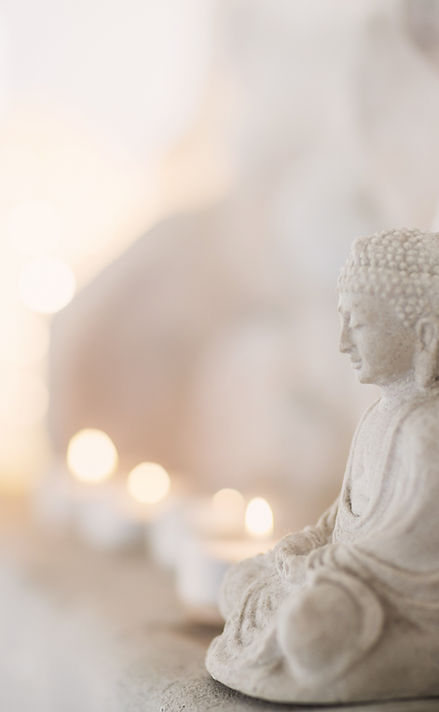SUNDAY SERVICE GUIDELINE
This guide outlines the typical Jodo Shinshu service format and provides information on etiquette and activities you may encounter. The service chair will announce each activity.
-
Oshoko, Offering of Incense is a gesture of gratitude and reverence. Burning incense is often viewed as a symbol of impermanence and transience.
-
Kansho Bell: Literally the “calling bell,” this is the traditional call to service. This is the time when attendees sit quietly and wait for the service to begin.
-
Opening Meditation and Nembutsu Recitation: Services begin with a short period of meditation, to help focus one’s thoughts on being ready to reflect on and hear the Dharma.
-
Singing of the Vandana Ti Sarana: This chant is the universal Buddhist affirmation of the Three Treasures: the Buddha (awakened individual), Dharma (teachings or truth), and Sangha (community).
-
Sutra Chanting: Chanting is typically done in Sino-Japanese, Japanese or Pali with English translations provided. Chanting is an expression of gratitude, and it may be an opportunity to reflect on our oneness with Amida Buddha, the Dharma, and the Sangha.
-
Singing of a Gatha: As part of most services, we will sing a gatha (song), as an expression of our spirituality. Some of these song are in Japanese others are in English. Each has a unique history.
-
Recitation: The Sangha is led in a recitation by the service chair. Examples include the Golden Chain and Jodo Shinshu Creed.
-
Dharma Message: The Dharma message or Howa is similar to a sermon or homily in other traditions. It is intended to provide insight into Buddhism and its relevance to our daily lives.
-
Singing of a second Gatha
-
Closing Meditation and Nembutsu Recitation: A short meditative period to close out the service, reflect on the service, and prepare for your week.
-
Sangha Announcements: Informal time to share information, news, and announcements about the temple.
-
Final Gassho: The service closes out with a final recitation of the Nembutsu.
-
Oshoko available for those unable to offer incense at the beginning of service.
ETTIQUETTE & EXPLANATIONS
Here is a brief orientation to assist you during your visit.
General Behavior: Everyone is welcome. It is expected that new attendees may not participate in all aspects of the service or perform differently than our custom. As you approach the service with a respectful curiosity, we encourage you to participate in our service rituals.
Hondo: The Hondo is the hall. It includes the shrine (Onaijin) and the areas with pews for seating (Gejin). It is considered a refuge. Upon entering, most attendees will bow in respect. We ask that those entering turn off cell phones and leave food or drink in the foyer.

